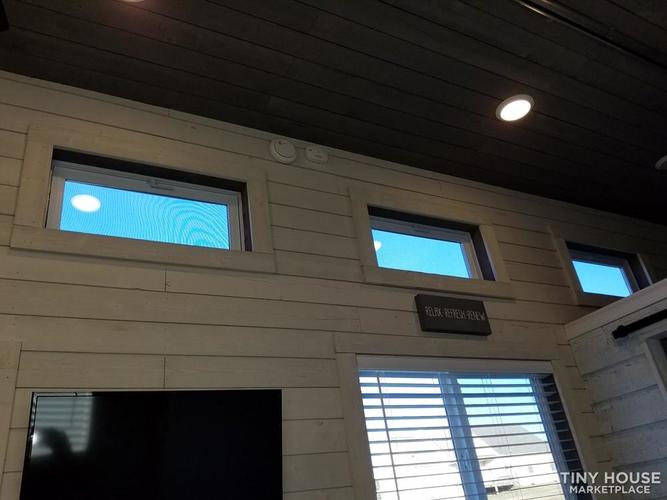Blog

Vikki Gerrard Of La Crosse Wi On Going Green With Tiny Houses
Are you looking for a way to reduce your environmental impact on the planet? Going green is more than just helping the environment; it’s also a great way to save money. One of the best ways to go green and save money simultaneously is by investing in a tiny house, says Vikki Gerrard of La Crosse WI. Tiny houses are an eco-friendly alternative that offers an affordable option without sacrificing comfort or style. In this blog post, we’ll explore why going small is better for sustainability, some tips for living sustainably in a tiny house, and inspiring examples of how people have made their tiny homes greener. So come on–let’s discover why going green with little house ideas sounds appealing!
Overview Of The Benefits Of Tiny Houses And Why Going Green Is Important
Tiny houses have become incredibly popular, and it’s easy to see why. Not only are they cute and cozy, but they also have several benefits for both the homeowner and the environment. One of the biggest draws of tiny houses is their sustainability. By being smaller, they require fewer resources to build, meaning they can often be made with recycled and eco-friendly materials. Their reduced energy usage makes them an attractive option for those looking to reduce their carbon footprint. But the benefits don’t stop there: living in a tiny house can also mean lower utility bills, more financial freedom, and a simpler, more fulfilling lifestyle. It’s clear that going green and embracing the tiny living movement can have a significant impact on the world and our daily lives.
Using Renewable Energy Sources For Powering A Tiny House

The tiny house movement has recently gained popularity as people seek more efficient, cost-effective, and sustainable ways of living. One of the best ways to achieve these goals is by powering tiny homes with renewable energy sources. There are plenty of options, from solar panels to wind turbines, depending on your location, climate, and energy needs. You can reduce your carbon footprint, save money on your energy bills, and enjoy the freedom and independence of generating your power. Whether you’re building your own tiny home or looking to retrofit an existing one, using renewable energy sources is an excellent way to achieve a greener and more fulfilling lifestyle.
How To Choose Eco-Friendly Building Materials

Choosing eco-friendly building materials can seem overwhelming, but taking the time to do so is crucial in reducing our environmental impact. When selecting materials, it’s essential to consider their life cycle, including how they’re produced, transported, and disposed of. Look for fabrics made from sustainable sources, like recycled or reclaimed materials, and those low in harmful chemicals. Additionally, consider purchasing materials locally to reduce their carbon footprint during transportation. Making conscious decisions about building materials can benefit the environment and promote healthier living for you and future generations.
Utilizing Natural Light And Ventilation Systems In Your Tiny House Designs

When living in a tiny house, utilizing natural resources like light and ventilation can make a massive difference in the overall design and functionality of the space. By incorporating large windows and skylights, you can flood your tiny home with natural light, making it more open and spacious. Additionally, including a ventilation system that utilizes natural airflow can provide plenty of fresh air and help regulate your home’s temperature. Whether you’re looking to create a more sustainable living space or just want to maximize the potential of your tiny house, incorporating natural light and ventilation systems should be at the top of your design list.
Tips On Creating An Efficient Kitchen, Bathroom, And Living Space
Creating an efficient kitchen, bathroom, and living space requires careful planning and a few tips and tricks. For instance, utilizing vertical space is a great way to save floor room while still having everything organized and easy to access. Adding storage options such as shelves, hooks, or containers can significantly decrease clutter and increase space. To make a bathroom more efficient, choosing dual-purpose fixtures such as a mirror cabinet or a towel rack with shelves can save room while providing essential functions. In the living room, having multi-functional furniture like a sofa bed or a coffee table with storage can create extra space for relaxing or entertaining. With these tips and more, you can create a functional and aesthetically pleasing area.
The Environmental Impact Of Smaller Homes And How They’re Helping To Reduce Carbon Footprints
With a growing concern for the environment, many homeowners are turning to smaller homes as a solution to reducing their carbon footprint. These tiny homes take up less space, use fewer resources to build, and require less energy to heat and cool. By downsizing, homeowners can significantly decrease their environmental impact while saving money on utilities. Additionally, smaller homes often encourage a simpler lifestyle and can promote a closer connection to nature. As the world seeks sustainable solutions to environmental issues, the popularity of smaller homes continues to grow.
Conclusion
Although it may require more upfront effort and planning, Vikki Gerrard of La Crosse WI says that tiny houses can inspire living spaces that reduce the environmental impact of traditional homes. From choosing eco-friendly building materials to harnessing renewable energy sources for powering homes, there are plenty of ways to make these miniature dwellings environmentally conscious. With proper design, efficient electrical and ventilation systems, and an emphasis on natural light, we can all take action towards creating a sustainable future by going green with tiny homes. It’s essential in mitigating climate change’s effects and helping create a healthier planet. So why not use this opportunity to join the tiny house movement while making a positive difference?